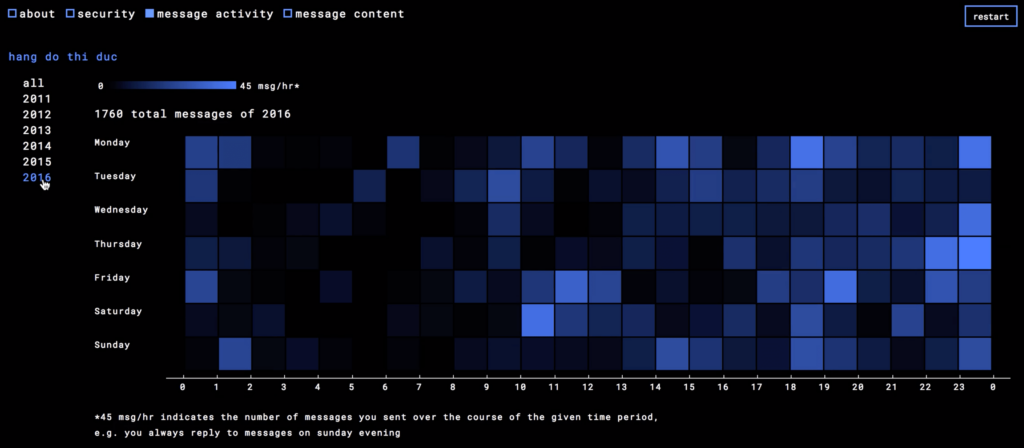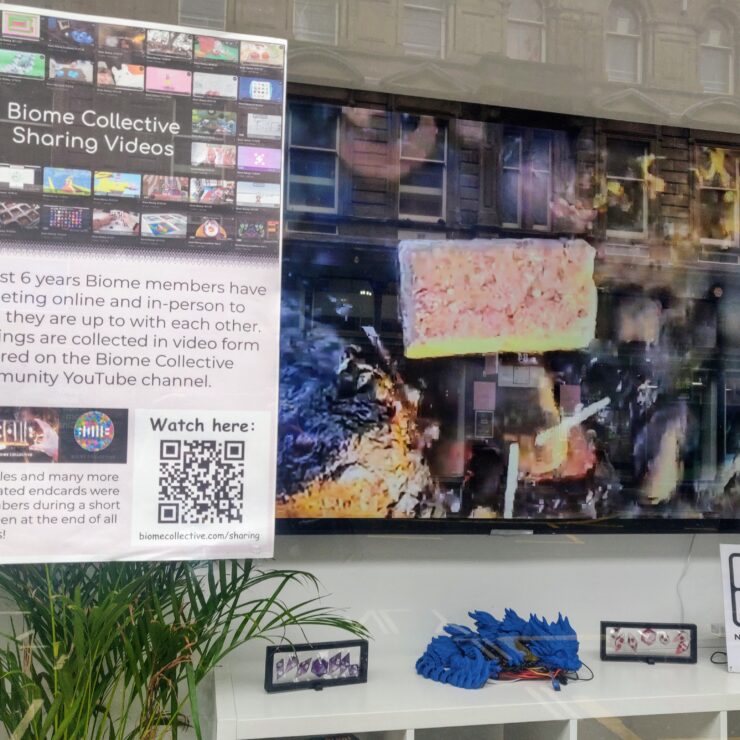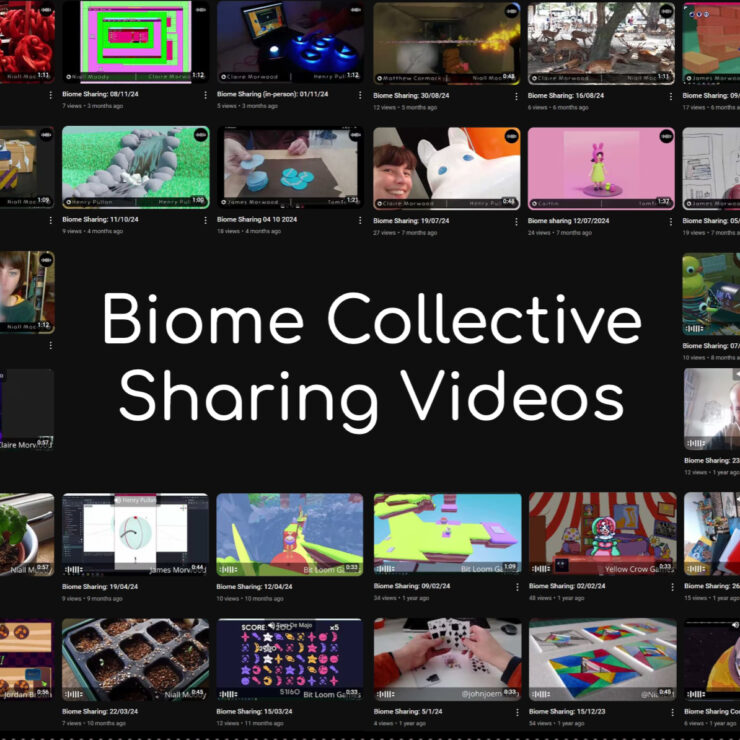“Underneath The Web, There’s A Beach!”

Martin Zeilinger recently joined the University of Abertay as a senior lecturer in Computational Arts & Technology. He has also been organising this year’s online exhibition for NEoN digitial arts festival; “SOUS LE WEB, LA PLAGE!” We talked to him ahead of the online launch about internet bubbles, the manipulative nature of social media, and some of the artworks we can expect to see featured in the exhibition.
What does “Sous Le Web, La Plage!” mean?
The title of the online exhibition is adapted from the French activist slogan “Sous les pavés, la plage!” Literally, this means: “Underneath the paving stones, there is a beach!” The original slogan was widely used in the May 1968 protest movement in France. At the time, students and other protesters often pulled up pavement stones to build barricades and create obstacles for the authorities. So the slogan both invokes an activist call to arms (“Tear up the streets…”) and a hopeful, utopian note (“…there’s a whole new world underneath!”). For the online exhibition, I adapted this as “Underneath the web, there’s a beach!” The suggestion of this is that by critically engaging with the infrastructure of the web (and digital technologies more generally), change can be effected.
Where did the idea to have an online exhibition come from? Why do you think it’s important to have one as part of a digital arts festival?
I have curated a few online exhibitions before (for Vector Festival in Toronto, in collaboration with Kate Micak and Skot Deeming). Having a web-based component to digital arts festivals strikes me as very important, because it is an opportunity to curate something that goes beyond addressing the medium of the digital and actually tries to work through that medium. The idea of an ‘online exhibition’ isn’t new, but it’s an interesting and difficult proposition – there isn’t really any agreement about what the ideal format for such an exhibition should be, so you’ll find many different experiments online. For NEoN, my plan was to not try to create a centrally hosted virtual ‘exhibition space,’ but instead to post a curatorial essay that includes outwards-pointing links which transport visitors to digital artworks hosted in various places around the web. In this way, the online exhibition functions as a kind of gateway.
Can art inspire change in real life? Do you think certain forms of media are more effective in causing societal or political change?
I’m absolutely convinced that art can inspire change in real life. It might not always be immediate or obvious, but art can very powerfully inflect the ways we see, feel, and understand the world (and ourselves in it). Isn’t that exactly how change is inspired? I couldn’t say whether there are media that are better or worse for this… but personally as a curator I’m strongly interested in the digital – and with regard to that I can say that in my opinion, the digital as such (endlessly malleable and redistributable, and potentially very accessible) has great potential to inform societal or political change.
Local philosopher Dominic Smith talks of many ‘internets’ rather than merely one ‘internet’. Do you think there’s something to gain from thinking in this way?
Yes I really do. Key among the idealist visions of the internet is definitely the notion of a ‘network of networks’ that transcends beyond hierarchy, beyond layers of permissions/restrictions, that needs no centre, that is inclusive, and that openly adapts to social and cultural norms. Of course, today, in its mainstream manifestations, the internet doesn’t work like that at all, and in fact it often appears as a really restrictive, oppressive, exploitative, and dark place. Nevertheless (or precisely because of this), I think it’s important to keep playing with and working on the diverse multiplicity of potentials, desires, and ideals that the still characterise the idea of the internet, and this is something that digital art often is really good at.
Aren’t internet ‘bubbles’ inevitable due to the way social media is structured? Does any of the art in the exhibition directly engage with potential solutions to this problem?
There are a couple of works in the exhibition that engage more or less directly with this issue of how technology facilitates the formation of bubbles, which can then have problematic effects in how we experience networked communication (they can filter, distort, echo, etc.). There are digital artworks that aim to directly counter-act these sorts of effects; others help to make us aware of them, and aim to activate us in order to oppose these effects. An example in the online exhibition is ‘Me and My Facebook Data’ (2017), by Hang Do Thi Duc. The piece, which was created as part of a web art residency hosted by ZKM and Akademie Solitude in Germany, helps you to access, visualise, and analyse the data that Facebook collects about you. When you first encounter it, this piece might not even appear like an artwork, but then you realise that gaining a new perspective on FB through this kind of artistic intervention can really change your thinking about corporate data-mining of user information.
Which work by Ben Grosser will you be showing? His ‘Safebook’ project is quite amusing, but does raise a serious point about our over-reliance on the platform and its effect on our mental health.
I’ve included Ben Grosser’s ‘Twitter Demetricator’. It’s basically a browser extension that removes all the metrics from the Twitter website interface – such as number of retweets, number of likes, number of followers, etc. (Ben has been making ‘demetricator’ tools like this since 2012, for all kinds of web-based social media services.) Removing these numbers might initially seem like a really simple intervention, but it also completely turns the functional logic of Twitter on its head – what you end up with is a playfully ‘purified’ way of accessing and circulating information, and when the numbers fall away, it becomes clear that Twitter and many other services have been using these numerical values in order to manipulate affect and empathy, to trigger and channel emotion, to economise attention… essentially to control user reactions and user behaviour. Ben’s work on this (not just as an artist but also as a researcher) is great. It’s also interesting that the big social media corporations have recently started to take these concerns more seriously as well, and some are now even considering to remove metrics from their interfaces… look it up!
What work by Jim Munroe have you selected?
I’ll show Jim Munroe’s ‘My Trip to Liberty City’ (2005). It’s a very funny machinima piece (i.e., a video created from videogame footage). It was recorded in Grand Theft Auto 3, and deals with how videogames like this one structure our interactions with the world, often prescribing violence as an inevitability. This particular artwork is about the misadventures of a friendly Canadian tourist on the tough streets of Liberty City.
Can you tell us a bit about the other pieces of work you’ll be including?
I don’t want to give too much away… There are six projects included in the show. Some are more overtly activist and critical in nature, while others invite the viewer to develop their own critical position in relation to different subjects. There’s a wide range of issues covered, from surveillance and privacy to freedom of expression and news manipulation, featuring six artists and artist collectives from pretty much all over the world.
How can people get involved if they want to?
As with all exhibitions, the best way to get involved is to come visit (in this case, check it out online)! Then, if something speaks to you, spread the word, and maybe even get in touch with the artist to learn more. The great thing about an online exhibition is that maybe there’s less of a barrier for entering into a conversation with an artwork and its contexts…
Anything you’d like to add?
This is the first year that I’m involved with NEoN (I just moved to Dundee a few months ago), and I’m very excited to be on board. All the programming looks phenomenal, and I really look forward to seeing all the work and events, and hearing all the presentations that are planned for the week!
“SOUS LE WEB, LA PLAGE!” will go live on Monday 4 November and will be available 24/7. For more information visit neondigitalarts.com/event/online-exhibition/.
Image credit: ‘Me and My Facebook Data’ by Hang Do Thi Tuc (screenshot)


